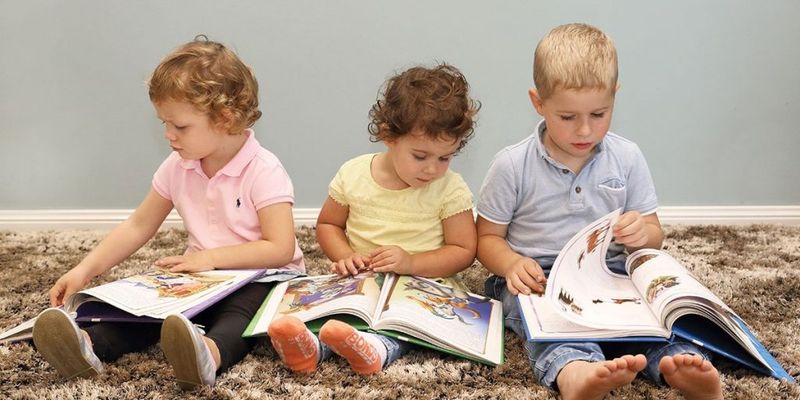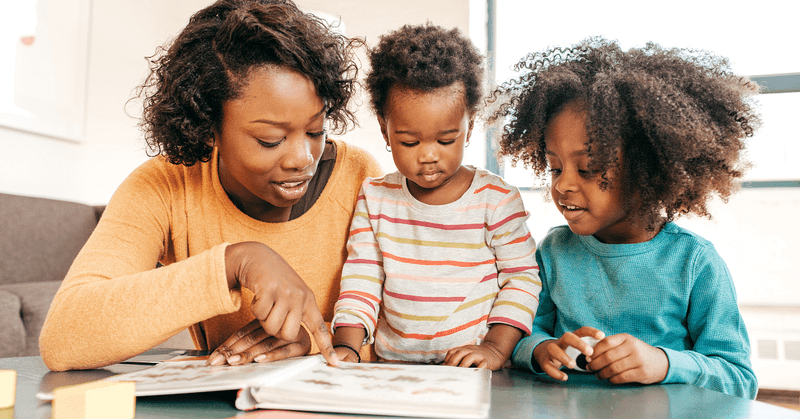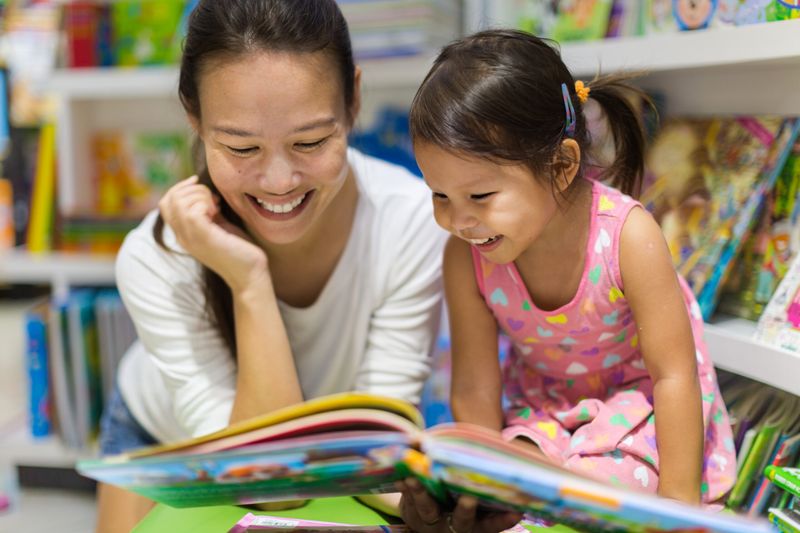Reading together as a family is more than just a pastime; it’s a doorway to deeper connections, enhanced learning, and cherished memories.
In a world bustling with digital distractions, establishing a family reading tradition offers a welcome escape into the world of words, fostering an environment rich in imagination and dialogue. Here are 18 compelling reasons to start this beautiful tradition today.
1. It Sparks Natural Curiosity
Have you ever watched a child’s eyes light up as they discover something new? Reading together can ignite that natural curiosity. Starting with picture books and moving to more complex stories, reading cultivates an eagerness to learn and explore. Inquisitive minds thrive when given the chance to question and understand their world.
Stories can transport families to far-off lands, introduce them to diverse cultures, and present fascinating facts. Each story read together strengthens the bonds between family members, turning reading into a shared adventure. Whether it’s discovering animals of the rainforest or the beauty of the cosmos, family reading opens the door to endless curiosity and wonder.
2. It Builds a Shared Language
Laughter shared over a favorite book creates a language all its own. Families can enjoy inside jokes or repeat favorite lines, creating a unique communication style. These moments become part of the family’s lexicon, enriching everyday conversations. Over time, reading together helps children understand language nuances and appreciate humor. It’s more than just words; it’s about shared experiences and emotions.
As children grow, they learn to express themselves more clearly and relate to others. This shared language becomes a tool for connection, making family bonds stronger. Books become bridges, allowing families to communicate in ways that transcend spoken language.
3. Kids Associate Reading With Connection
Reading together transforms books into symbols of comfort and connection. For children, the act of snuggling up for a bedtime story becomes synonymous with warmth and safety. These rituals reinforce the idea that reading is a shared experience, fostering a lifelong love for books. A child’s association of reading with positive emotions encourages them to seek out stories independently.
The bond created during these moments extends beyond the pages, helping children feel more connected to their family. As they grow, these memories remind them of love and the joy of exploring stories together.
4. It Reduces Screen Time Without a Fight
In a digital age, reducing screen time can be a battle. Reading offers a peaceful alternative, captivating the mind without the glow of a screen. Families can find solace in turning pages instead of channels. This shift not only reduces screen time but also enhances focus and relaxation. Parents can lead by example, showing children the joys of unplugged entertainment.
The gentle routine of reading together creates a natural pause in the day, free from digital distractions. By prioritizing books, families foster a love for reading and cultivate a balanced lifestyle, making screen time reduction effortless and enjoyable.
5. Stories Become Family History
Books read together often become cherished family stories. Grandparents may share tales they loved as children, passing them down to eager young ears. Each story becomes a thread in the family’s tapestry, weaving past with present. These narratives carry values, lessons, and emotions that resonate through generations.
Families can revisit these stories, finding new meanings as children grow. This tradition of sharing stories creates a sense of continuity and belonging. The tales become a part of family lore, treasured and retold at gatherings. Through reading, families build a legacy of words that endure, turning everyday reading into a timeless tradition.
6. It Helps Children Build Empathy
Books offer windows into other people’s lives, fostering empathy and understanding. By reading about diverse characters and experiences, children learn to see the world from different perspectives. Stories can evoke emotions and inspire compassion, teaching children to empathize with others. Through narratives, families can discuss complex topics, helping children grasp the nuances of human emotions.
Reading together nurtures a kinder, more empathetic mindset. As children relate to characters’ struggles and triumphs, they develop a deeper awareness of others’ feelings. This emotional intelligence becomes a vital tool in navigating relationships, making reading an essential part of raising compassionate individuals.
7. It Creates Consistent Quality Time
In the hustle and bustle of daily life, finding quality time can be challenging. Reading together offers a consistent and meaningful way to reconnect. The regularity of shared reading sessions creates a rhythm that families can depend on. These moments become anticipated points of connection, providing an oasis of calm and togetherness.
The consistency of this routine strengthens familial bonds, offering a sense of security and love. Families can look forward to these moments, knowing they provide a dedicated space for engagement and interaction. This shared habit becomes a cherished ritual, fostering deeper connections and lasting memories.
8. It Improves Vocabulary Without the Flashcards
Expanding vocabulary can be a fun and natural part of family reading. Without the need for flashcards, children can encounter new words in context, aiding understanding and retention. Engaging stories filled with rich language expose children to diverse vocabulary. Families can pause to discuss unfamiliar words, turning reading into an interactive learning experience.
This organic approach to language learning enhances comprehension and expression. Parents can support this by encouraging curiosity and exploration of language. Over time, children gain confidence in their verbal abilities, enjoying the richness of words and stories. Reading together makes vocabulary building an enjoyable adventure.
9. Kids Learn How to Focus and Sit Still
In a world full of distractions, learning to focus is a valuable skill. Reading together teaches children the art of concentration and patience. Through engaging stories, children learn to sit still and immerse themselves in the narrative. This practice helps them develop focus, aiding them in academic and personal pursuits.
Families can create a calm environment conducive to reading, making it a relaxing and enjoyable experience. As children become engrossed in books, they learn to tune out distractions, enhancing their ability to concentrate. This focus becomes a lifelong asset, benefiting them in various aspects of life.
10. It Gives Parents a Gentle Way to Teach Values
Stories have the power to convey important life lessons. Through reading, parents can introduce values and ethics in a gentle, non-confrontational way. Books offer scenarios that challenge characters to make choices, prompting discussions about right and wrong. These conversations can help children internalize values and develop a strong moral compass.
Family reading times provide an opportunity to explore these themes together, fostering understanding and reflection. By choosing stories with meaningful messages, parents can guide their children in a nurturing manner. This approach integrates learning with bonding, making values education a seamless part of family interactions.
11. It Starts Meaningful Conversations
Books can spark conversations that might not happen otherwise. Reading together provides a platform for discussing complex topics and exploring diverse viewpoints. Families can delve into themes such as friendship, adversity, and identity, fostering open dialogue. These conversations help build trust and understanding between family members.
As children grow, their ability to articulate thoughts and opinions develops, enriched by the stories they encounter. This exchange of ideas becomes a cornerstone of family interaction, enhancing communication skills. Reading together thus becomes a catalyst for meaningful exchanges, bridging generations and broadening perspectives.
12. Reading Routines Lower Stress Levels
Incorporating reading into daily routines can significantly reduce stress. The act of reading allows families to unwind and momentarily escape from life’s pressures. The soothing rhythm of turning pages creates a tranquil environment. Shared reading times offer a break from responsibilities, promoting relaxation and mindfulness.
This habit helps families manage stress by providing a consistent and comforting ritual. As they delve into stories, stress dissipates, replaced by the enjoyment of shared adventures. The calming effect of reading strengthens emotional resilience, equipping families to handle challenges more effectively. Thus, reading becomes a vital tool in maintaining mental well-being.
13. It Encourages Active Listening
Reading aloud fosters active listening, a skill vital for effective communication. When families read together, children learn to listen attentively, processing information and responding thoughtfully. This practice aids in understanding and retaining details, enhancing cognitive abilities. As stories unfold, listeners engage with the narrative, participating in discussions and sharing insights.
Families can encourage this by asking questions and inviting interpretations, making reading an interactive experience. Active listening also strengthens relationships, as it involves being present and attentive. By nurturing this skill, families cultivate an environment of mutual respect and open communication, enriching their interactions.
14. It Shows Kids That Learning Never Stops
Books are gateways to lifelong learning. Reading as a family demonstrates that education extends beyond classrooms. Libraries and bookstores become exciting destinations, where families explore endless possibilities. This love for learning is nurtured through diverse reading materials, inspiring curiosity and growth.
Children realize that knowledge isn’t confined to textbooks, sparking interest in various subjects. Families can share insights, fostering an environment where questioning and learning are valued. This approach instills a love for discovery, encouraging children to pursue knowledge independently. Reading together reinforces the idea that learning is a continuous journey, full of wonder and exploration.
15. It Boosts Academic Confidence
Reading regularly boosts academic confidence in children. As they encounter new information and concepts, their understanding of various subjects deepens. This familiarity with books enhances comprehension and analytical skills, translating to improved performance in school. Families can support this by celebrating reading milestones and encouraging exploration.
A positive reading environment nurtures a child’s self-esteem, making them more willing to tackle academic challenges. By building confidence through reading, children develop a strong foundation for lifelong learning. Family support plays a crucial role, providing encouragement and fostering a love for reading that translates into academic success.
16. It Builds Stronger Bonds Without Pressure
Family reading time fosters connections without the pressure of structured activities. The relaxed nature of reading allows families to enjoy each other’s company, strengthening bonds naturally. This unstructured environment encourages open communication and shared experiences. Books act as a neutral ground, bringing families together without the need for elaborate plans.
This simplicity makes reading accessible and enjoyable for everyone, from toddlers to grandparents. As stories unfold, laughter and insights are shared, creating a sense of belonging and unity. Reading together becomes a cherished tradition, reinforcing family ties in an organic and fulfilling way.
17. It Creates Rituals Kids Remember for Life
Traditions are the heart of family life, and reading together can become one of them. Special occasions can be marked by reading themed stories, adding a layer of magic to celebrations. These rituals, whether daily or seasonal, create lasting memories for children. The warmth of a shared story becomes intertwined with the essence of family, reminding children of love and togetherness.
Over time, these rituals are cherished and passed down, becoming a beloved part of family heritage. As children grow, they carry these memories forward, nurturing the tradition with their own families. Reading together thus becomes a timeless gift.
18. Books Often Say What We Struggle To
Sometimes, books articulate emotions and experiences better than we can. Reading together provides an opportunity to explore complex feelings and situations through characters and narratives. Families can find comfort in books that address difficult topics, facilitating conversations that might be challenging to start. These stories offer insights and understanding, helping children process emotions.
By discussing these narratives, families can navigate sensitive topics with empathy and care. Books become a tool for expression, allowing family members to connect and communicate more effectively. This shared understanding strengthens relationships, making reading an invaluable resource in fostering open and honest dialogue.



















